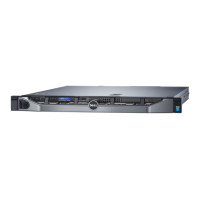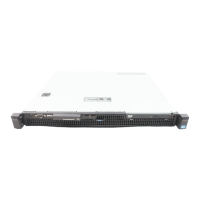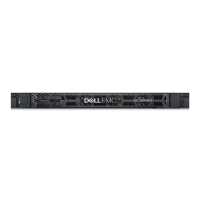Table 11. System setup options—Serial Communication menu (continued)
Serial Communication Settings
Serial Port Address Allows selection of Serial Port Address.
By default, the COM1 option is selected.
External Serial Connector
By default, Serial Device 1 drop down is selected.
Failsafe Baud Rate
By default, 115200 drop down is selected.
Remote Terminal Type Allows selection of Remote Terminal Type.
By default, the VT100/VT220 option is selected.
Redirection After Boot Enables or disable the Redirection After Boot.
By default, the Enabled option is selected.
Table 12. System setup options—System Profile Settings menu
System Profile Settings
System Profile
By default, Performance Per Watt (DAPC) drop down is selected.
CPU Power Management
By default, the option is System DBPM (DAPC).
Memory Frequency
By default, Maximum Performance drop down is selected.
Turbo Boost
By default, the option is Enabled.
Energy Efficient Turbo
By default, the option is Enabled.
C1E
By default, the option is Enabled.
C-States
By default, the option is Enabled.
Memory Patrol Scrub
By default, the option is Standard.
Memory Refresh Rate
By default, the option is 1x.
Uncore Frequency
By default, the option is Dynamic.
Energy Efficient Policy
By default, the option is Balanced Performance.
Monitor/Mwait
By default, the option is Enabled.
Workload Profile
By default, Not Configured drop down is selected.
CPU Interconnect Bus Link Power
Management
By default, the option is Enabled.
PCI ASPM L1 Link Power Management
By default, the option is Enabled.
Table 13. System setup options—System Security menu
System Security Settings
CPU AES-Ni
By default, the option is Enabled.
System Password Set, change, or delete the System password.
Setup Password Set, change, or delete the Setup password.
Password Status Unlock or lock the Password Status.
By default, the Unlocked option is selected.
92 BIOS setup

